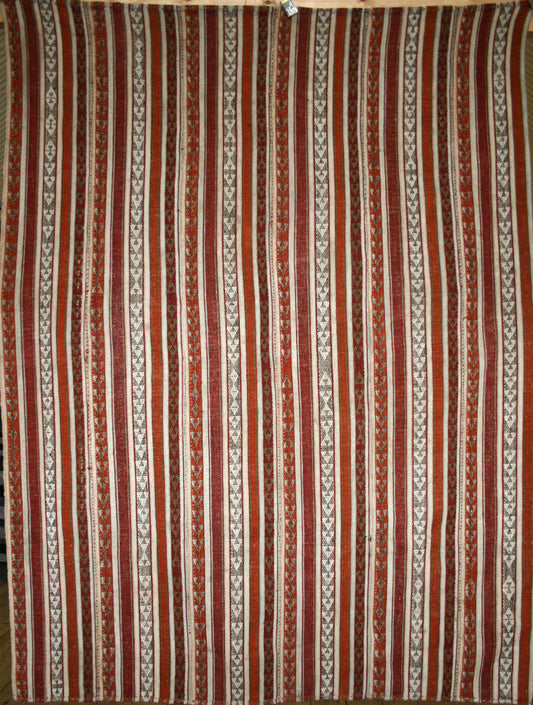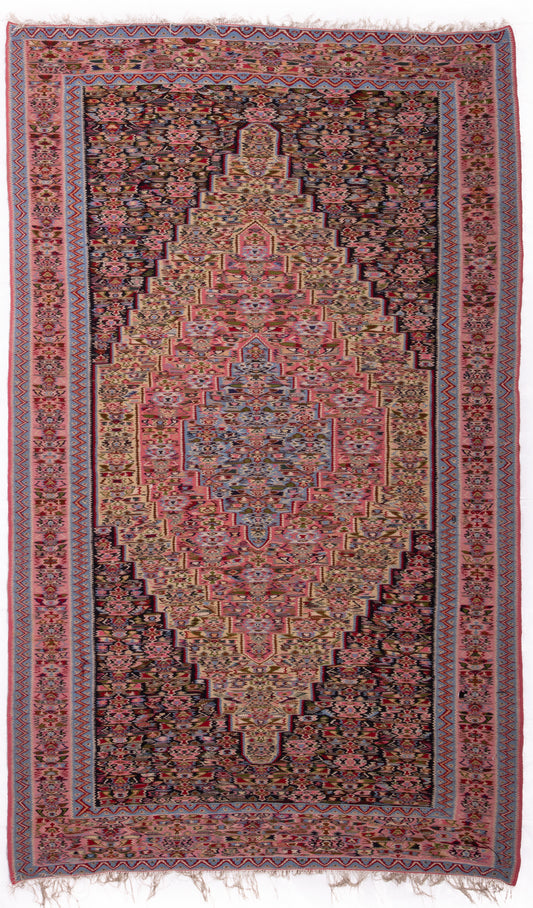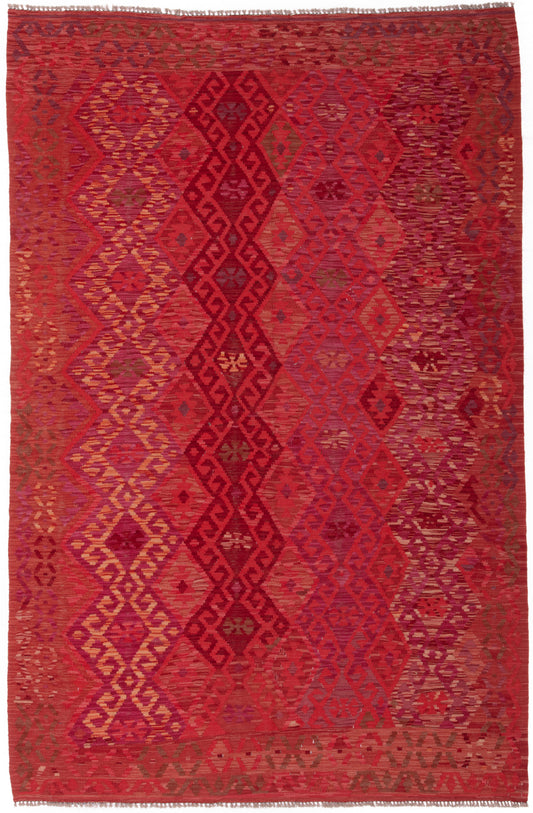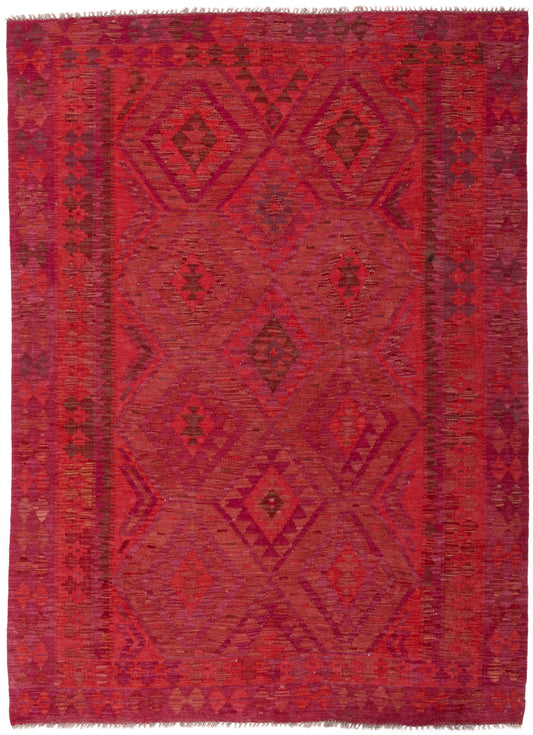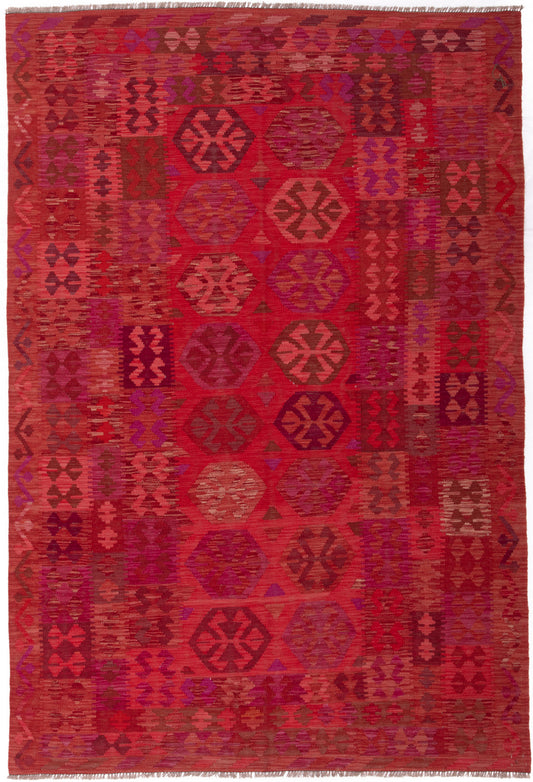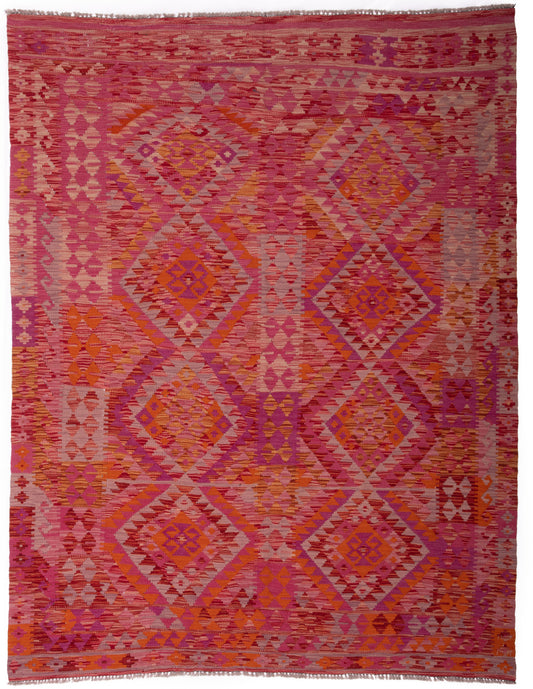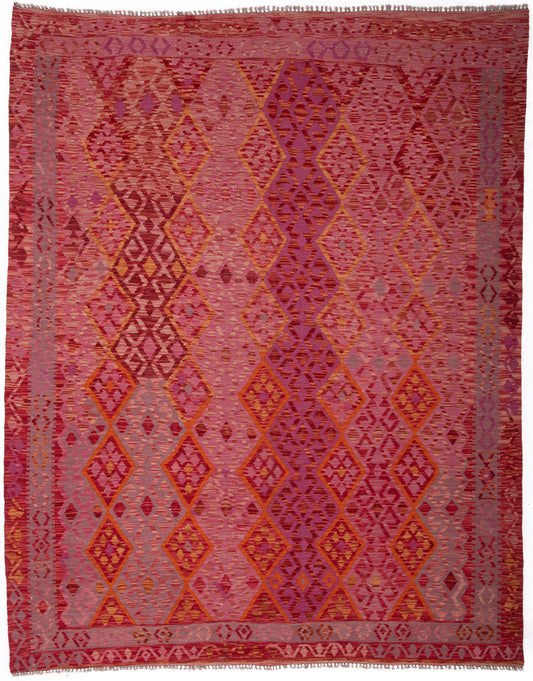Kilim Rug Guide
Introduction to Kilim Rugs
A Kilim rug (pronounced kee-leem) is a type of woven floor covering that has a long history rooted in the cultures of the Middle East, North Africa, and Central Asia. The word "Kilim" itself is of Turkish origin, referring to a pileless textile produced using a flat-weaving technique. These rugs are not only functional but also boast unique and intricate designs, making them exquisite pieces of artwork.

The Origin and History of Kilim Rugs
Kilim rugs date back to the 5th century AD, with the earliest examples discovered in the Hotan district of Xinjiang, China. Traditionally, these rugs were handwoven by tribal women for household use, serving as floor and wall coverings, blankets, or prayer rugs. Over time, the art of Kilim weaving spread across the globe, becoming a symbol of cultural heritage and identity.
Pronunciation Guide: How to Say "Kilim"
Kilim is pronounced as "kee-leem", with emphasis on the first syllable. The name stems from the Persian gelīm where "gel" means "to spread roughly", perhaps alluding to the rug's functional use on the floor.
Types of Kilim Rugs
While the term "Kilim" encapsulates a broad range of rugs, there are several distinct types that stand out because of their unique characteristics, origins, and weaving techniques.
The Turkish Kilim Rug
Turkish Kilim rugs, also known as Anatolian Kilims, are among the most popular types. Renowned for their geometric and stylized floral patterns, these rugs often feature bold, vibrant colours derived from natural dyes.
The Antique Kilim Rug
Antique Kilim rugs are valued for their age, rarity, and traditional motifs. The designs of these rugs often tell stories or symbolize tribal traditions, making each piece a historical artifact.
The Vintage Kilim Rug
Vintage Kilim rugs, often sourced from the mid-20th century, offer a blend of traditional craftsmanship and modern aesthetics. They are ideal for those who seek a touch of antiquity without leaning too heavily into the past.
The Persian Qashqai Kilim Rug
The Persian Qashqai Kilim rug is a specific style of Kilim rug originating from the Qashqai tribe in Iran. They are distinguished by their fine weave and the use of high-quality wool, typically dyed in deep, rich hues.
The Caucasian Kilim Rug
Caucasian Kilim rugs, crafted in the mountainous regions of the Caucasus, are known for their rugged durability and distinctive geometric designs. The use of bold, contrasting colours is a hallmark of these rugs.
The Modern Kilim Rug
Modern Kilim rugs draw inspiration from traditional designs but incorporate contemporary colour palettes and simplified patterns. These rugs are perfect for the modern home, offering a blend of traditional craftsmanship and contemporary aesthetics.
The Use of Kilim Rugs in Home Décor
Kilim Rugs in the Living Room: A Perfect Match?
Kilim rugs can be a wonderful addition to any living room. Their rich textures and vibrant patterns add a unique focal point, while their versatile nature allows them to blend seamlessly with various décor styles, from traditional to modern.
Arranging a Kilim Rug: Tips and Tricks
When arranging a Kilim rug, consider its size, colour, and pattern. The rug should complement the room's overall aesthetics without overwhelming it. Here are a few tips:
- Position the rug to create balance in the room, either by centring it or by using it to define a specific area.
- For a harmonious look, match the rug's dominant colour with the room's accents.
- If your Kilim rug boasts a bold pattern, keep the surrounding décor simple to let the rug stand out.
Kilim Rug Versatility: From Floor to Wall
While Kilim rugs are traditionally used as floor coverings, their stunning designs make them versatile décor pieces that can also be hung on walls, used as throws on furniture, or even turned into pillow covers.
Materials and Construction of Kilim Rugs
The Quality of Kilim Rugs: What Makes Them So Special
Kilim rugs are cherished worldwide for their exceptional quality, which is largely attributed to their handcrafted nature. Each rug is meticulously woven by skilled artisans, making every piece unique.
The Handmade Kilim Rug: A Labour of Love
Handmade Kilim rugs are true labours of love, often taking weeks or even months to complete. The weavers incorporate their personal experiences, cultural narratives, and artistic flair into the designs, resulting in rugs that are not just functional items, but also works of art.
Wool, Cotton, and Silk: The Different Materials of Kilim Rugs
The materials used in Kilim rugs can greatly influence their texture, durability, and overall look. Here are the most common materials:
- Wool Kilim rug: Wool is the most traditional and widely used material. It provides warmth, durability, and a soft texture.
- Cotton Kilim rug: Cotton is used for its softness and flexibility. It's often used in combination with wool to create a balanced texture.
- Silk Kilim rug: Silk rugs are less common due to the high cost and delicate nature of the material. However, they offer an unmatched sheen and luxurious feel.
Caring for Your Kilim Rug
Vacuuming Your Kilim Rug: Do's and Don'ts
Regular vacuuming can help keep your Kilim rug looking its best. However, it's important to be gentle to avoid damaging the rug. Use a vacuum without a beater bar and vacuum from side to side, not end to end, to prevent the fringes from being sucked into the vacuum.
Fade and Wear: How Durable Are Kilim Rugs?
Despite their delicate appearance, Kilim rugs are remarkably durable thanks to the tight, flat weave. However, like any other rug, they can fade and wear over time, especially if exposed to direct sunlight or high traffic. Regular care and rotation can help prolong their lifespan.
The Importance of a Kilim Rug Pad
A rug pad is essential for any Kilim rug. It provides extra cushioning, prevents slippage, and helps the rug keep its shape. Plus, it can even extend the rug's life by reducing wear and tear.
What to Put Under Your Kilim Rug: The Best Underlays
Underlays for Kilim rugs should be sturdy, non-slip, and breathable. They should also be cut slightly smaller than the rug to maintain a neat appearance. Materials like felt, rubber, or a combination of the two are often recommended.
Buying a Kilim Rug
The Price of Kilim Rugs: Are They Worth It?
Kilim rugs can vary widely in price, depending on factors such as size, age, condition, and complexity of design. However, given their handmade nature, artistic value, and durability, many consider them a worthy investment for both their functional and aesthetic appeal.
How to Identify an Authentic Kilim Rug
Authenticating a Kilim rug can be a complex task, often requiring a keen eye and knowledge of Kilim patterns, dyes, and weaving techniques. Some key signs of authenticity include:
- Natural, vegetable-based dyes instead of synthetic ones
- Irregularities in the weave or pattern, indicating handmade craftsmanship
- The absence of a thick pile, as Kilims are flatwoven
- Patterns that are the same on both sides, indicating a true Kilim weave
The Thickness of Kilim Rugs: What to Expect
Compared to piled rugs, Kilim rugs are relatively thin due to their flatweave construction. However, their thickness can still vary depending on the materials used and the tightness of the weave. A good-quality Kilim rug should feel substantial but not bulky.
Other Types of Rugs and Their Comparison with Kilim Rugs
While Kilim rugs are a popular choice, they are just one of many types of handwoven rugs available. Let's explore a few others, such as Dhurries, Soumak, and Suzani, and see how they compare with Kilims.
Dhurries
Dhurries, originating from India, are flatwoven rugs similar to Kilims. However, they typically feature simpler, more graphic designs and are often woven with cotton rather than wool, making them lightweight and easy to clean. Dhurries are usually reversible and are known for their durability, making them a practical choice for high-traffic areas. Compared to Kilims, they tend to have a more casual and rustic aesthetic.
Soumak
Soumak rugs, also known as Soumakh or Sumak, originate from the Caucasus region. Unlike Kilims, Soumak rugs are not flatwoven but are crafted using a specific type of weft wrapping that results in a thicker, more textured surface. This technique also allows for more intricate, detailed designs compared to Kilim rugs. Soumak rugs are not reversible due to the loose ends of the weft threads on the backside.
Suzani
Suzani is not a type of rug but a decorative tribal textile made in Central Asia. "Suzani" means "needle" in Persian, reflecting the fact that these textiles are traditionally hand-embroidered with a tambour hook, not woven. Suzani designs often feature sun and moon disks, flowers, leaves, vines, fruits, and occasionally birds or fish. While Suzanis can be used as floor coverings, they are more commonly used as wall hangings, bed covers, or furniture throws.

Comparison with Kilim Rugs
While Dhurries, Soumak, and Suzani textiles share similarities with Kilim rugs, such as their handmade nature and cultural significance, they each have distinct characteristics that set them apart. Dhurries are similar in their flatweave construction but often feature a more rustic aesthetic. Soumak rugs, with their unique weave, offer a more textured and detailed surface, while Suzani textiles captivate with their hand-embroidered, symbolic designs.
Despite these differences, Kilim rugs, Dhurries, Soumak rugs, and Suzani textiles all have a unique charm and beauty that can enrich any living space. The choice between them will ultimately depend on personal preference, decor style, and functionality requirements.
Frequently Asked Questions About Kilim Rugs
Are Kilim Rugs Reversible?
Yes, Kilim rugs are reversible. Due to the flatweaving technique used, the pattern appears the same on both sides, making them ideal for high-traffic areas or for changing up your decor easily.
Does Vacuuming Flatten a Kilim Rug?
Vacuuming should not flatten a Kilim rug if done properly. It's best to use a vacuum without a beater bar to prevent damage to the rug. Additionally, alternating the direction of vacuuming can help maintain the rug's texture.
Conclusion
Kilim rugs are a testament to centuries-old traditions, offering not just utility, but a rich tapestry of history and culture. Whether you are a seasoned collector or a first-time buyer, the beauty and charm of these rugs are sure to captivate.
Browse Our Current Selection of Kilim Rugs
-
 Sold
SoldAfghan Kilim Rug
Regular price £515.00Regular priceUnit price / per -
Persian Shiraz Kilim Rug
Regular price £895.00Regular priceUnit price / per -
 Sold
SoldAfghan Kilim Rug
Regular price £445.00Regular priceUnit price / per -
 Sold
SoldAfghan Kilim Rug
Regular price £165.00Regular priceUnit price / per -
Afghan Kilim Runner
Regular price £145.00Regular priceUnit price / per -
 Sold
SoldAfghan Kilim Runner
Regular price £495.00Regular priceUnit price / per -
Persian Kurdish Kilim Rug
Regular price £2,495.00Regular priceUnit price / per -
Afghan Kilim Rug
Regular price £795.00Regular priceUnit price / per -
Afghan Kilim Rug
Regular price £715.00Regular priceUnit price / per -
Afghan Kilim Rug
Regular price £760.00Regular priceUnit price / per -
Afghan Kilim Rug
Regular price £695.00Regular priceUnit price / per -
Afghan Kilim Rug
Regular price £795.00Regular priceUnit price / per


